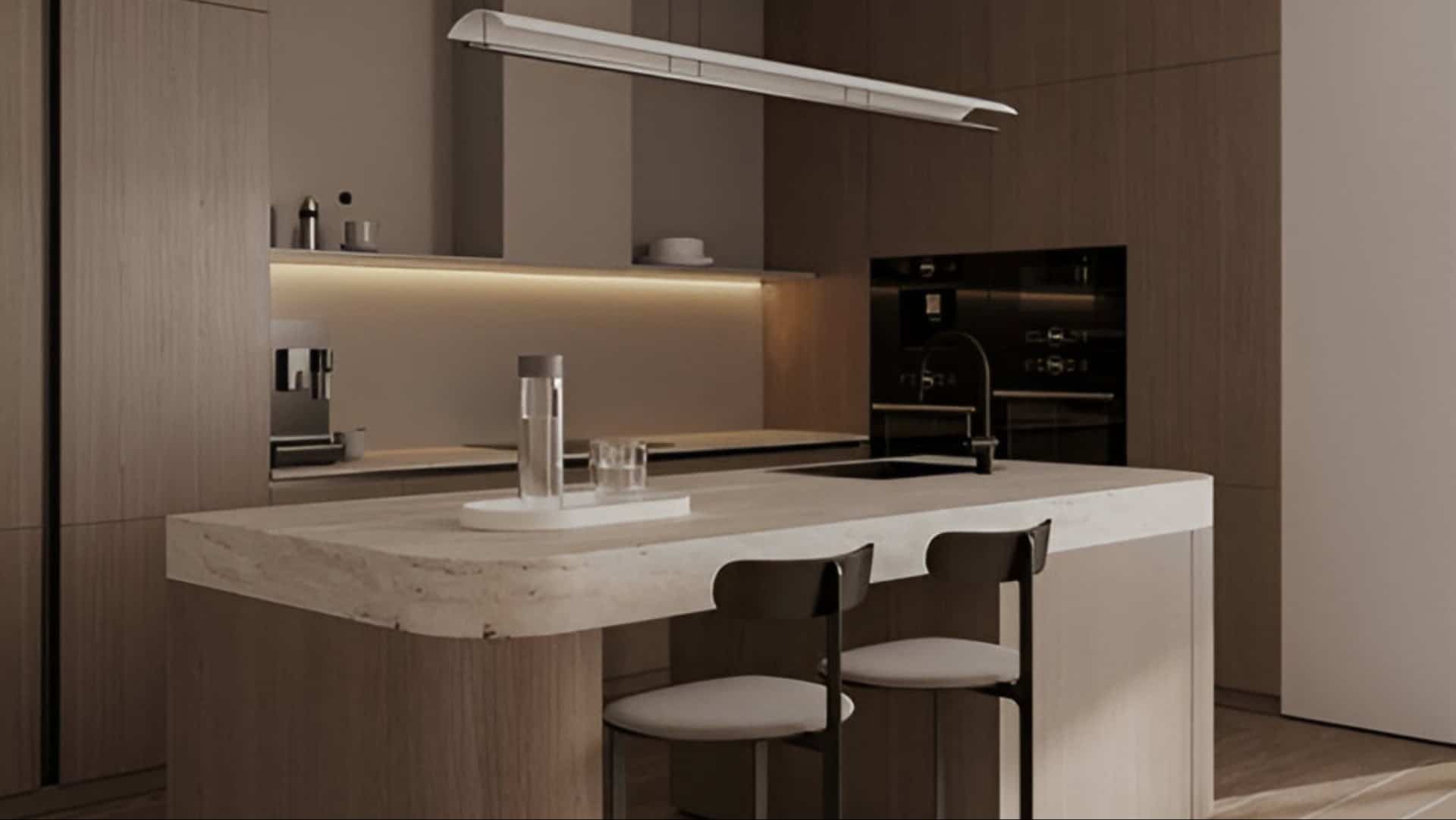Welcome to the world of minimalism where simplicity meets functionality.
Designing a minimalist kitchen can streamline your cooking space, reduce clutter, and enhance your culinary experience.
Here, we explore 10 essential features that embody minimalist principles, helping you create a stylish, efficient kitchen that’s both modern and timeless.
From sleek cabinetry to multifunctional appliances, these elements will provide inspiration and practical guidance to transform your kitchen into a minimalist haven.
1. Sleek White Cabinetry
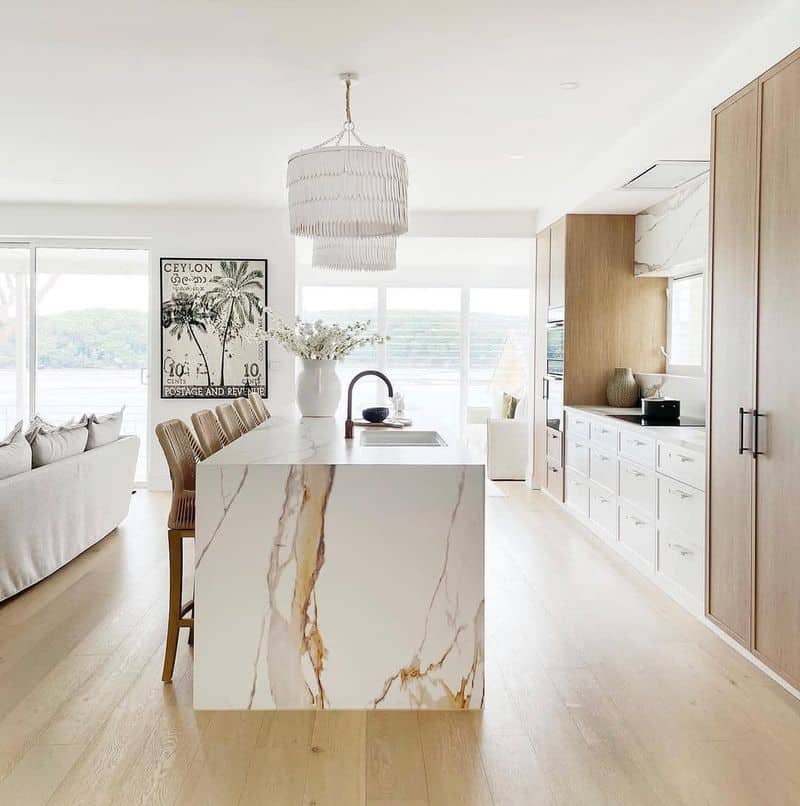
Sleek white cabinetry is a hallmark of minimalist kitchen design, offering a clean and airy feel.
Its simplicity in design, often with hidden handles or push-to-open mechanisms, ensures a clutter-free appearance.
White reflects light, making spaces feel larger and more open, essential in smaller kitchens.
This choice pairs well with various other materials, such as wood or stainless steel, allowing flexibility in design while maintaining a cohesive minimalist aesthetic.
2. Integrated Appliances
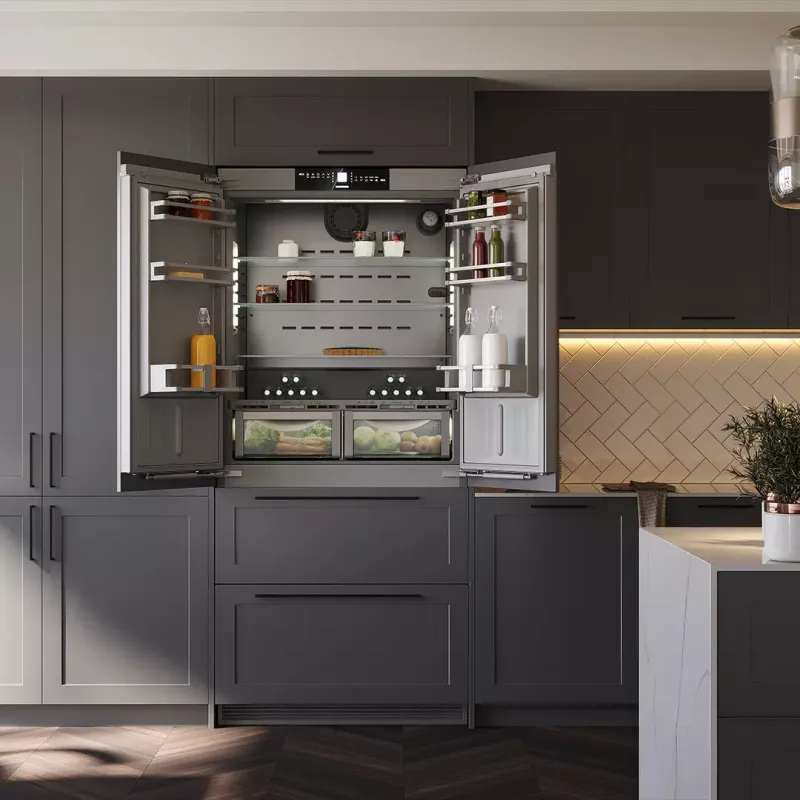
Integrated appliances are essential for a minimalist kitchen, maintaining a seamless appearance.
Concealing fridges, dishwashers, and ovens behind cabinetry keeps the visual flow uninterrupted.
This approach not only enhances aesthetics but also supports functionality, allowing for easy access without disrupting the kitchen’s clean lines.
Integrated appliances contribute to a more spacious feel by eliminating visual clutter, making it a practical choice for those valuing simplicity and efficiency.
3. Open Shelving
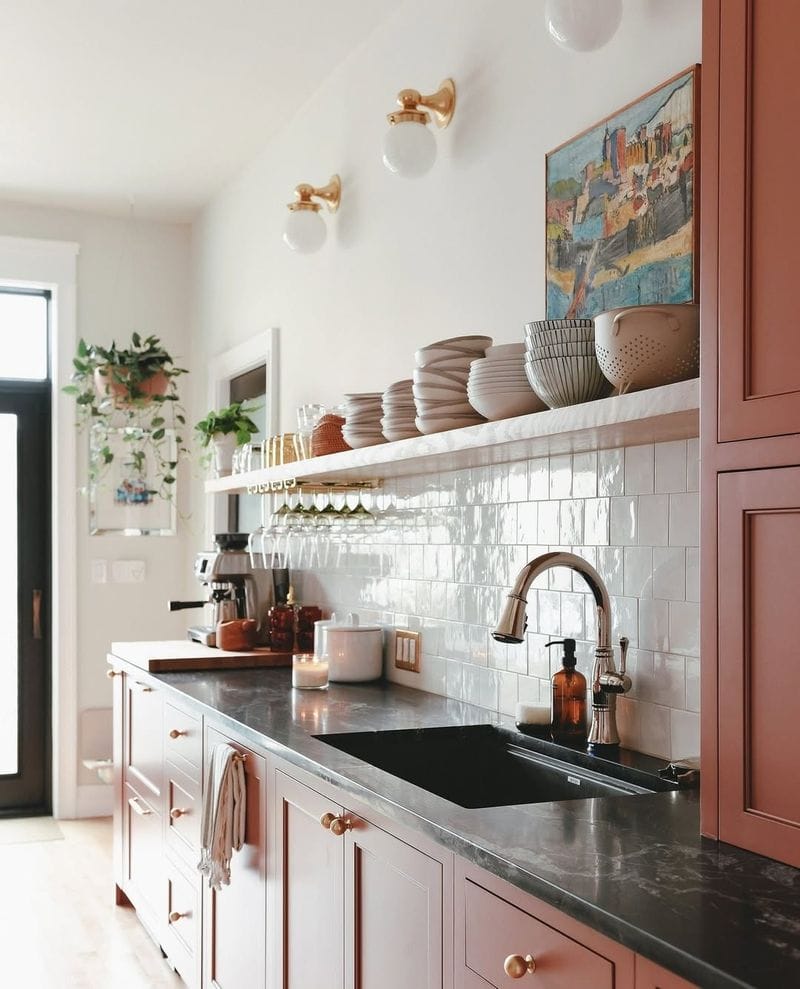
Open shelving provides both practical storage and a minimalist display in the kitchen.
By showcasing carefully selected dishware or cookbooks, it adds personality without overwhelming the space.
This choice encourages organization, as items are always visible and must be kept tidy.
Additionally, open shelves can visually expand a room, breaking up heavy cabinetry and allowing for creative styling that aligns with minimalist principles.
4. Neutral Color Palette
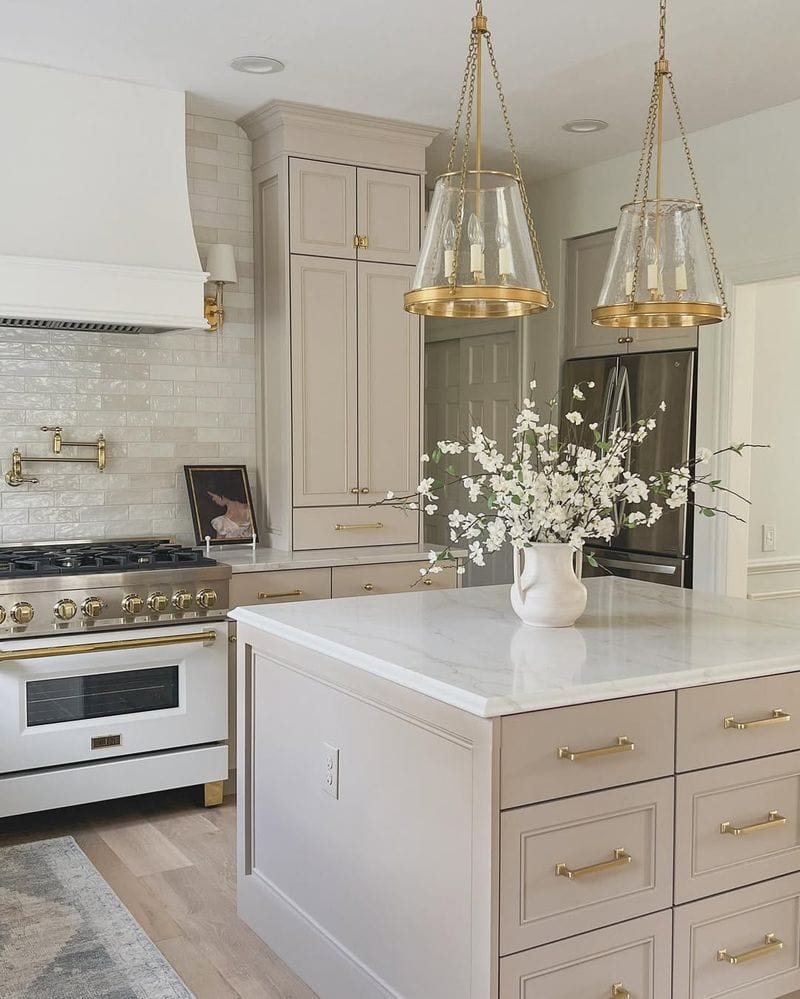
A neutral color palette is fundamental in minimalist kitchen design, creating a serene and cohesive environment.
Shades of white, grey, and beige dominate, providing a timeless backdrop that enhances natural light.
This palette allows for versatility, easily adapting to personal style changes over time.
Moreover, neutral tones can be paired with various textures and materials, offering endless possibilities while maintaining the minimalist aesthetic’s essential simplicity and elegance.
5. Minimalist Lighting Fixtures

Minimalist lighting fixtures play a key role in enhancing kitchen ambiance while complementing the design.
Simple pendant lights or under-cabinet LEDs add functionality without overpowering the space’s aesthetic.
Choosing fixtures with clean lines and subtle finishes helps maintain the minimalist theme.
These lights not only illuminate work areas but also highlight architectural features, ensuring the kitchen feels bright, inviting, and consistent with minimalist principles.
6. Efficient Storage Solutions
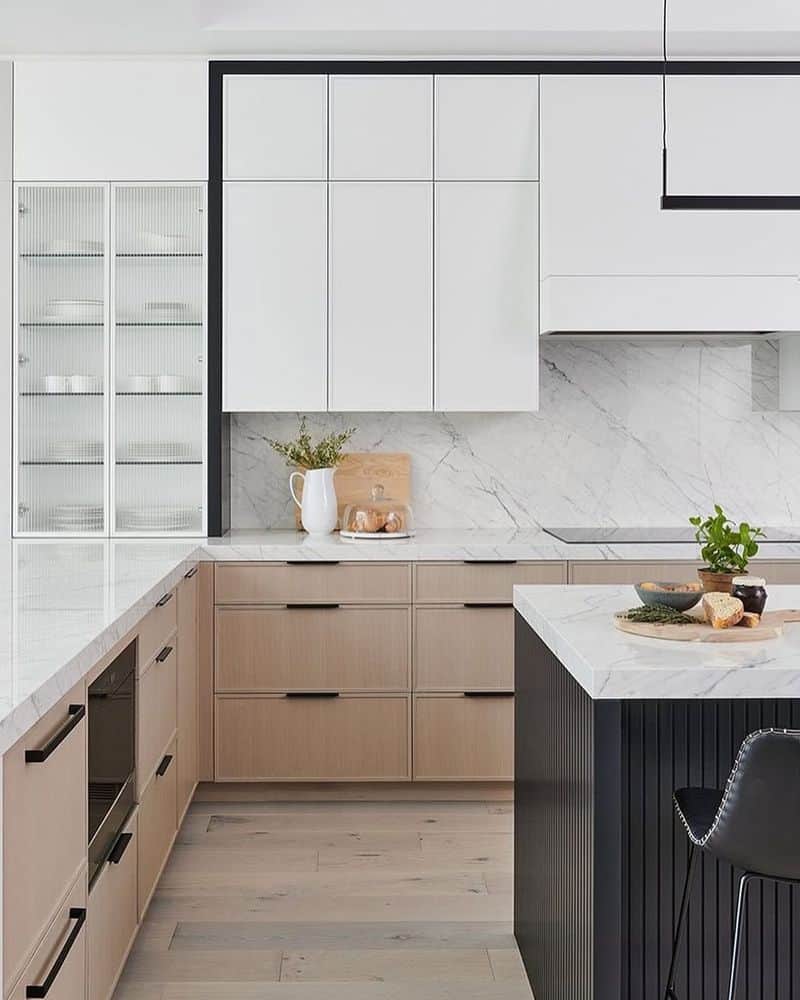
Efficient storage solutions are vital in a minimalist kitchen, optimizing space and maintaining order.
Features like pull-out pantries and hidden drawers help utilize every inch effectively.
These innovations reduce clutter, ensuring that essentials are accessible yet out of sight.
By embracing clever storage, homeowners can enjoy an organized kitchen that aligns with minimalist aesthetics, proving that beauty and functionality can coexist seamlessly.
7. High-Quality Countertops
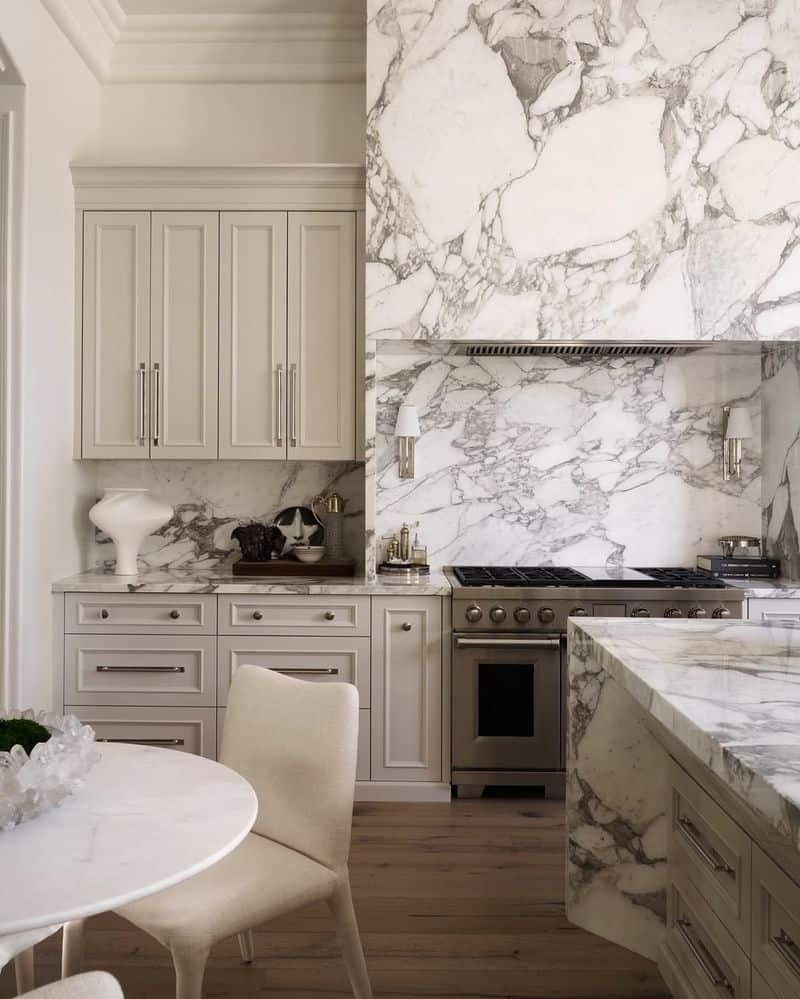
High-quality countertops, such as marble or quartz, enhance a minimalist kitchen’s elegance and durability.
Their smooth surfaces provide easy maintenance and a clean look.
These materials withstand wear, making them a practical choice for busy kitchens.
Additionally, their natural patterns add subtle visual interest without disrupting the minimalist aesthetic, embodying the balance between form and function essential in minimalist design.
8. Multipurpose Furniture
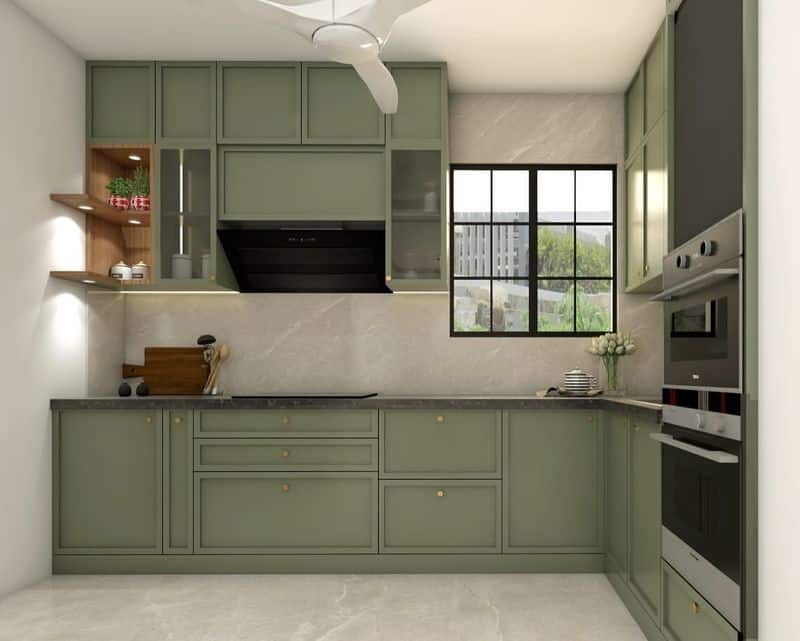
Multipurpose furniture like kitchen islands with built-in storage and seating offers practicality without sacrificing style.
These elements maximize space usage, ideal for smaller kitchens.
An island can serve as a prep area, dining spot, and storage unit, embodying minimalist efficiency.
This approach encourages a clutter-free environment, allowing for a seamless blend of form and function, which is at the heart of minimalist design.
9. Hidden Trash Solutions
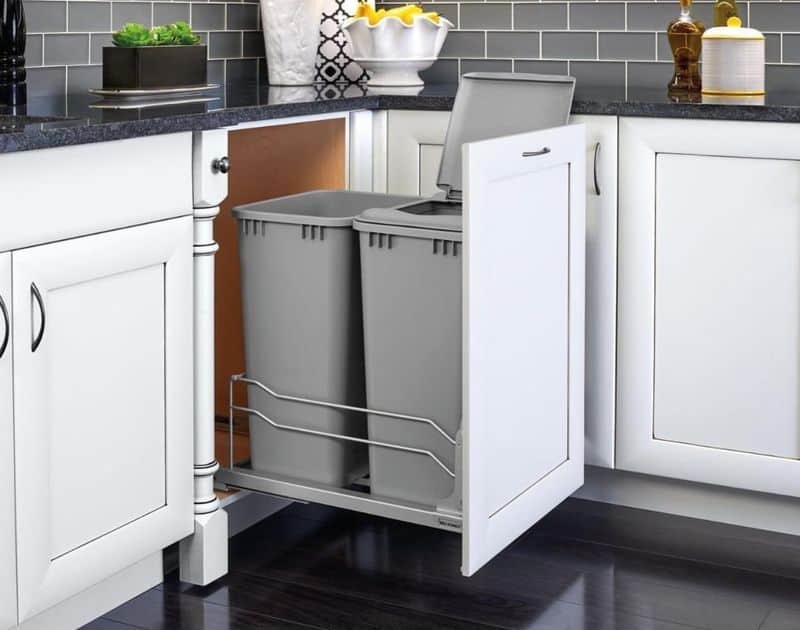
Hidden trash solutions ensure a tidy, odor-free minimalist kitchen. Concealing bins within cabinetry maintains the streamlined look critical to minimalist design.
This feature keeps unsightly elements out of sight, enhancing the kitchen’s clean lines and uncluttered appearance.
Moreover, it supports hygiene and convenience, making waste disposal easy without disrupting the kitchen’s aesthetics, aligning with the minimalist commitment to simplicity.
10. Natural Elements
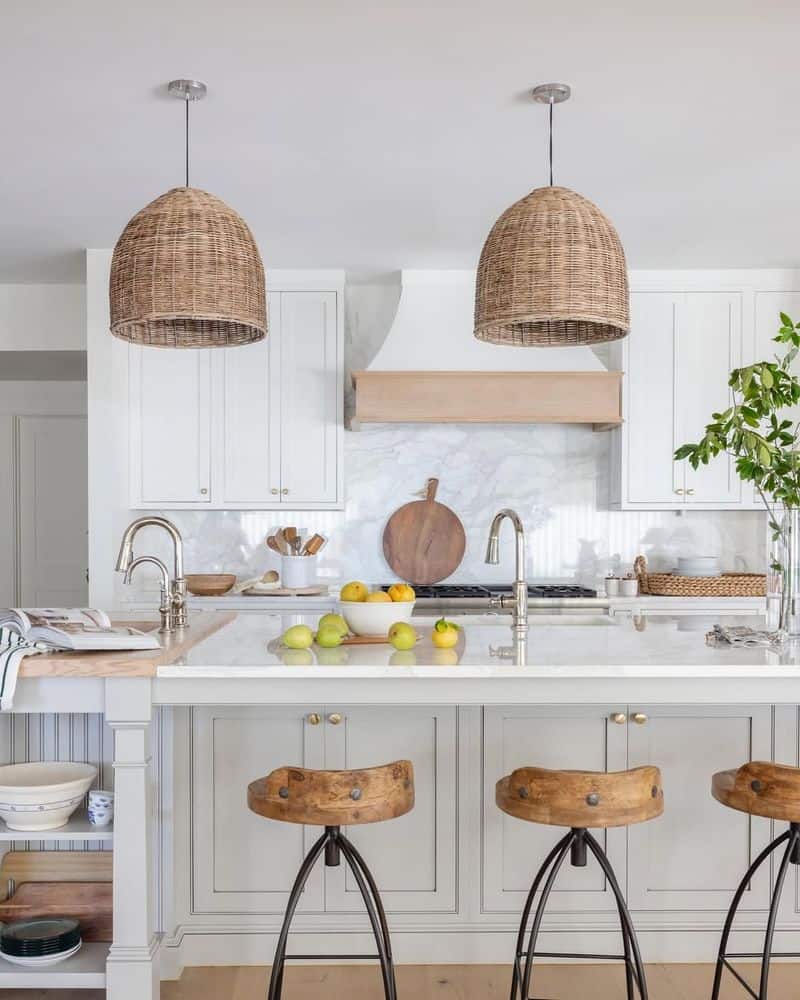
Incorporating natural elements like wood or plants adds warmth and texture to a minimalist kitchen.
These elements soften the austere lines of modern design.
Wooden accents or a small herb garden can provide contrast, creating visual interest while staying true to minimalist principles.
By bridging the gap between modernity and nature, these features enhance the kitchen’s ambiance, making it inviting and balanced.

